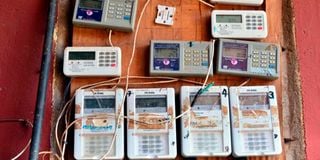Why you may be paying more than your neighbour for power tokens

A prepaid electricity token machine provided by Kenya Power.
The increase of electricity prices by Kenya Power early this month became a hot topic, especially on social media this week, that raised debate on the utility’s pricing mechanism.
The outrage saw many Kenyans post screenshots showing how the utility firm had suddenly given them less units (kilowatt-hours) of electricity than during their previous purchase, which was for some, just days earlier.
This was after the government withdrew the electricity subsidy that has kept power prices stable since December last year, unleashing a sharp increase in the cost of electricity.
But an unintended consequence of hundreds of customers sharing their power purchase records online led to some hawk-eyed consumers noting that, for the same amount of money, some were getting more units. For instance, while one consumer got 45.73kWh for Sh1,000, another got 62.75kWh for the same amount.
“This make no sense,” said one consumer.
The price variations are, however, legal.
The Energy and Petroleum Regulatory Authority (Epra), which is legally mandated to set power tariffs every three years, sets the tariffs based on user bands.
To set the prices, Epra puts into consideration numerous factors, including the revenue requirements of firms along the power chain, as well as the need to make electricity more affordable to consumers.
In so doing, the second cheapest tariff is reserved for consumers who, on average, use 100 units or less monthly, referred to as lifeline consumers.
The cheapest tariff is paid by government ministries, departments, agencies and county governments who pay Sh5.5 per unit of electricity.
Also Read: Cooking gas consumption drops on high prices
In the latest power tariffs announced by Epra in January, lifeline customers pay Sh7.7 per unit of energy charge, excluding taxes, levies and other variable costs.
This is 63 percent more than other domestic consumers, who, on average, use more than 100 units a month.
This category of domestic consumers, who use between 100 units and 15,000 units monthly, pay Sh12.6 per unit, which is a difference of Sh4.9 per unit.
These two categories of electricity consumers — lifeline customers and domestic customers who use more than 100kWh monthly — make up 7.85 million, which is 94.85 per cent of Kenya Power’s 8.27 million customer base.





